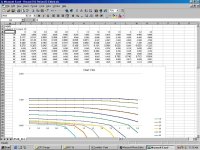Aircraft Trim
Hello Aleatorylamp,
Please go back to Post 1028. There is a bit of very useful information there.
One of my pilot's comments was about the consistent nose down trim.
Your post suggests it Should be a slight nose UP trim if the altimeter becomes steady with reduced power:
Steps to establish Cruise setting
1. Climb to operational altitude.
2. Reduce power until aircraft is no longer climbing.
3. Adjust Trim.
Note that these steps would make no sense if the aircraft were nose heavy or became more nose heavy as speed increased.
Regarding Maneuverability:
I will have to agree with my test pilot here.
The controls will need some adjustment to make this Big Duck qualify as maneuverable.
- Ivan.
Hello Aleatorylamp,
Please go back to Post 1028. There is a bit of very useful information there.
One of my pilot's comments was about the consistent nose down trim.
Your post suggests it Should be a slight nose UP trim if the altimeter becomes steady with reduced power:
Steps to establish Cruise setting
1. Climb to operational altitude.
2. Reduce power until aircraft is no longer climbing.
3. Adjust Trim.
Note that these steps would make no sense if the aircraft were nose heavy or became more nose heavy as speed increased.
Regarding Maneuverability:
I will have to agree with my test pilot here.
The controls will need some adjustment to make this Big Duck qualify as maneuverable.
- Ivan.






